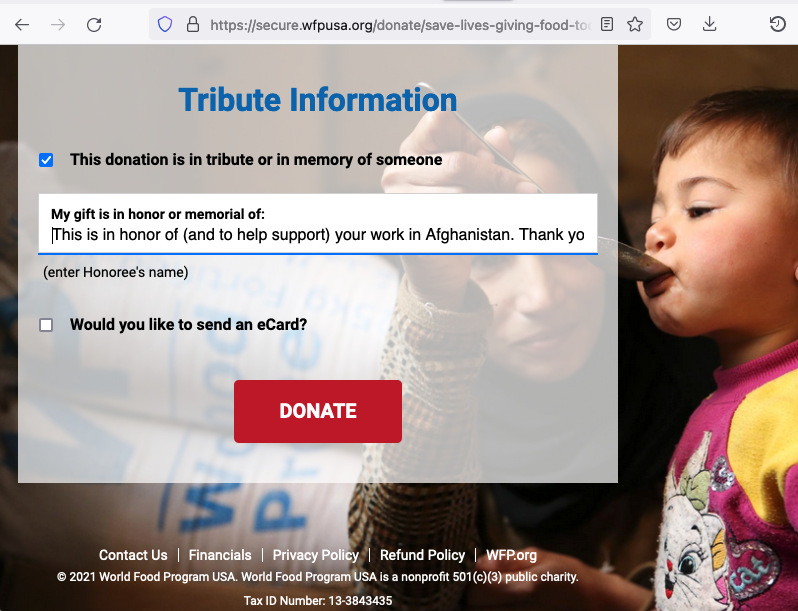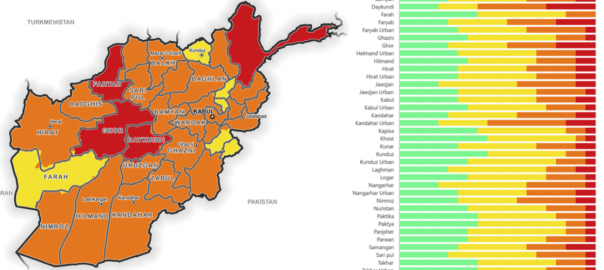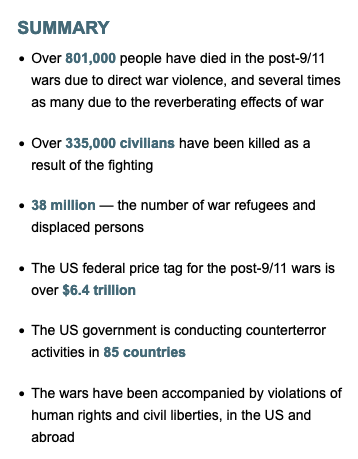If you followed most US corporate media coverage you might believe that (1) the only important news in Afghanistan today is what’s happening in and near Kabul airport; (2) all “sane” Afghans want to leave their country; and (3) the best way Westerners can help is by bringing these people to our shores and integrating them here.
Take a deep breath. None of these things is true.
Afghanistan’s population is 39 million people. Maybe 100,000 of them are currently seeking to leave the country. Since dozens of well-funded aid agencies (and the US military!) are currently helping these people to relocate successfully, I suggest that the best way well-meaning people in the West can help the whole population of Afghanistan–and indeed, the whole world, including ourselves–is to focus on these two tasks:
- To do all we can to ensure that the rest of Afghanistan’s people are able to withstand the numerous dire humanitarian crises that threaten them (Covid, hunger, homelessness, economic collapse, the approach of winter) and to rebuild a much more resilient and less conflict-plagued country.
- To learn from the lessons of the US-led wars in Afghanistan and Iraq, which have inflicted so much suffering on so many people–and nearly all of it paid for by US taxpayers–so that we never launch such completely avoidable wars of choice, ever again.
Avoidable? Yes. The US could have responded to the horrors of 9/11 in numerous ways other than launching a military assault on Afghanistan. I suggested one such way in a Christian Science Monitor column I wrote on 9/11 itself, here.
Instead of which, the war that Bush launched against Afghanistan and his follow-up invasion of Iraq ended up killing over 335,000 civilians and costing US taxpayers over $6.4 trillion. It also wrought societal and economic devastation on both those countries that will reverberate for many years to come. You can learn many of these very disturbing details at the excellent website of Brown University’s “Costs of War” project, from which I took the above screengrab.
So yes, let’s do whatever we can to learn those lessons and ensure that no similarly quite avoidable war of choice is launched by our government ever again.
But there is also a lot we can and should do today to help that vast majority of the people of Afghanistan who remain in their own disastrously war-sundered country.
The warnings from the leading UN-related inter-governmental aid agencies are dire. Henrietta Fore, the Executive Director of UNICEF, said in a statement August 23:
Today, around 10 million children across Afghanistan need humanitarian assistance to survive. An estimated 1 million children are projected to suffer from severe acute malnutrition over the course of this year and could die without treatment. An estimated 4.2 million children are out of school, including more than 2.2 million girls. Since January, the UN has documented over 2,000 grave violations of children’s rights. Approximately 435,000 children and women are internally displaced.
… We anticipate that the humanitarian needs of children and women will increase over the coming months amidst a severe drought and consequent water scarcity, the devastating socioeconomic consequences of the COVID-19 pandemic and the onset of winter.
On August 24, the regional director for Afghanistan of the World Health Organization issued an equally sharp warning:
even before these latest events, Afghanistan was the world’s third largest humanitarian operation due to war, displacement, drought, hunger, and, of course, the COVID-19 pandemic. Over 18 million people — more than half the population — already need humanitarian assistance to survive. And these needs are increasing daily.
On August 22, those two organizations, UNICEF and the WHO, issued a potent call for the immediate establishment of a humanitarian airbridge for the sustained and unimpeded delivery of aid into Afghanistan. Their statement noted that,
with no commercial aircraft currently permitted to land in Kabul, we have no way to get supplies into the country and to those in need. Other humanitarian agencies are similarly constrained…
Conflict, displacement, drought and the COVID-19 pandemic are all contributing to a complex and desperate situation in Afghanistan. Humanitarian agencies need to be supported and facilitated to meet the enormous and growing needs in Afghanistan, and make sure that no one dies unnecessarily due to lack of access to aid.
There are, of course, many ways to get urgently needed aid supplies into Afghanistan other than through Kabul airport. The road links to neighboring countries such as Pakistan, Tajikstan, and Iran continue to be open and potentially–or actually–usable by aid convoys. (Most Americans don’t know about those routes because those countries refused to allow the US military to use them for the US-citizen evacuation programs that continue to dominate American news coverage.)
In this August 24 statement, the World Food Program (WFP) noted that, “Despite security and logistics challenges, WFP maintains access to most of the country including areas experiencing active fighting.” Other international aid agencies based in a variety of other countries are also planning to ramp up their delivery of aid via the ground-transportation routes. But the humanitarian airbridge into Kabul airport is also sorely needed. The needs of the country’s people are huge.
You can learn more about these urgent needs at any of the four web-pages I’ve linked to above; and this Afghanistan portal page from Reliefweb will bring you continued updates. The banner image above is a portion of this map (PDF) that I found there, that shows projections of which provinces in Afghanistan are projected to experience a food insecurity emergency by November (in red) and which the slightly less level of a food insecurity crisis (orange.) The provinces colored yellow are merely “stressed”.
For people who want to help Afghanistan’s people right now, I would urge these two actions:
- Call your member of Congress and urge them to push for the immediate establishment of a humanitarian airbridge into Kabul, as called for by UNICEF and the WHO.

- Make a donation to one of these international aid organizations, trying if possible to designate it for their work in Afghanistan. For example, I just made a donation to the WFP, which did not have any immediate way to designate it. But they did allow me to tag the donation as “in tribute or in memory of someone”. So I made it “In honor of (and to help support) your work in Afghanistan.”

